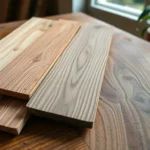Choosing the right tool can make or break your woodworking projects, and when it comes to routers, the decision isn’t always straightforward. Palm routers and trim routers might look similar at first peek, but their differences can significantly impact your work’s precision and efficiency. Whether you’re crafting intricate designs or working on quick fixes, understanding which router suits your needs is crucial.
You don’t want to invest in the wrong tool only to realize it doesn’t deliver the results you envisioned. By diving into the unique strengths and uses of palm and trim routers, you’ll gain the confidence to pick the perfect companion for your create. Ready to elevate your woodworking game? Let’s explore which router will help you achieve flawless finishes every time.
Understanding Palm Routers

Palm routers are compact tools designed for precision and versatility in woodworking projects. Their lightweight build and user-friendly features make them ideal for fine, detailed work.
Features And Specifications
Manufacturers design palm routers with easy handling in mind. Most weigh between 3 to 6 pounds, ensuring reduced fatigue during extended use. They often offer single-hand operation, making them perfect for light-duty tasks.
Variable speed controls are common, enabling you to adjust the cutting speed to suit different materials. Bit sizes typically range from 1/4 inch, covering a variety of cutting, trimming, and decorative needs. Many models include a depth adjustment feature for enhanced accuracy.
Durability comes from components like aluminum or high-quality plastic bodies. Some models also incorporate ergonomic grips to improve comfort. Accessories such as edge guides, dust extraction ports, and LED lights often come standard to increase efficiency and precision.
Best Applications For Palm Routers
Palm routers excel in tasks requiring detail work. These include creating grooves, trimming laminate, or rounding edges on wood pieces. Their precision makes them a go-to tool for projects like finishing cabinetry or crafting wooden signs.
They’re commonly used to handle light-duty routing projects where smaller bits and controlled speed are sufficient. Palm routers are not suited for heavy-duty routing or large-scale material removal. For accurate decorative designs or small dovetail cuts, they consistently deliver high-quality results.
Exploring Trim Routers

Trim routers are compact, lightweight tools designed for precision woodworking. They focus on delivering high accuracy and efficiency for smaller, detailed tasks.
Features And Specifications
Trim routers typically weigh around 2 to 5 pounds, which makes them easy to handle for extended periods. Their small size allows for superior maneuverability in tight spaces. Most models come with fixed or plunge bases to adapt to exact tasks. Variable speed controls enable you to match the router speed to the material being worked on, improving control and finish quality.
The motor power of trim routers ranges from 1 to 1.5 horsepower, suitable for light to medium-duty operations. Depth adjustment mechanisms allow precise cutting depth, often measured in increments as fine as 1/64 inch for accuracy. Many models include additional features such as LED lights for enhanced visibility and ergonomic designs to reduce hand strain during detailed work.
Best Applications For Trim Routers
Trim routers excel in tasks that emphasize detail and fine control. They’re ideal for edging applications, such as creating decorative edges on wood or trimming laminate countertops. You can use them for hinge mortising, inlay work, and small-diameter template routing. Their accuracy makes them suitable for creating smooth, polished finishes on woodworking projects.
In scenarios requiring mobility, trim routers offer convenience for on-site adjustments or quick fixes. They handle lightweight materials well, including veneers and thin plywood, but aren’t suited for heavy material removal or large-scale routing tasks.
Key Differences Between Palm And Trim Routers
Palm and trim routers share similarities but differ significantly in certain aspects that directly impact their use in woodworking. Understanding these distinctions helps you select the right tool for your exact tasks.
Power And Performance
Trim routers typically offer motor power between 1 and 1.5 horsepower, suitable for light to medium-duty work. They handle edging tasks and small-diameter template routing effectively but lack the strength for heavy material removal.
Palm routers usually deliver less power, commonly below 1 horsepower, emphasizing precision over force. Their performance supports detailed tasks such as rounding edges or creating shallow grooves. Choose a palm router for accuracy in delicate projects rather than speed or strength.
Size And Maneuverability
Trim routers are lighter, weighing between 2 and 5 pounds. This compact design makes them perfect for tight spaces and quick adjustments. Use them where portability and control are key.
Palm routers, slightly heavier at 3 to 6 pounds, maintain a compact form while offering enhanced stability. Their ergonomic build reduces fatigue across extended use, especially in detail-oriented tasks.
Versatility In Woodworking Projects
Trim routers excel in hinge mortising, laminate trimming, and on-site adjustments. These tasks require precision and mobility, aligning well with the router’s design attributes.
Palm routers suit fine details like engraving decorative patterns, finishing edges, and trimming laminate. While versatile, they aren’t ideal for medium to heavy-duty applications due to lower power levels.
Pros And Cons Of Each Router Type

When deciding between palm routers and trim routers, understanding their advantages and disadvantages helps you make the best choice for your woodworking projects. Each type offers unique features and limitations suited to exact tasks.
Advantages Of Palm Routers
Palm routers provide exceptional precision for detailed work. Their lightweight design, typically between 3 and 6 pounds, minimizes fatigue during prolonged use. Most models include features like variable speed controls and depth adjustments for greater versatility. Their ergonomic grips ensure better handling, especially for extended projects. These routers excel at fine woodworking tasks, such as creating grooves, trimming laminate, and rounding edges.
Disadvantages Of Palm Routers
Palm routers often lack the motor power needed for heavy-duty operations. Their lower power output, which prioritizes finesse, makes them unsuitable for large-scale material removal. They may struggle with harder materials or tasks requiring deep, aggressive cuts. Their compact size limits their capability for commercial-grade or industrial projects.
Advantages Of Trim Routers
Trim routers excel in maneuverability, particularly in tight spaces. Weighing between 2 and 5 pounds, they allow you to handle detail-oriented tasks with ease. Many include fixed or plunge bases, along with variable speed controls, which enhance precision. Their 1 to 1.5 horsepower motors provide sufficient power for light to medium-duty operations. These routers perform well in edging applications, hinge mortising, and small template routing.
Disadvantages Of Trim Routers
Trim routers may not perform well in heavy material removal or extensive routing projects. Their lightweight builds and moderate power output are better suited to smaller materials. They tend to generate more vibration when used for prolonged periods on denser materials. The lack of extensive power capabilities limits their range for intensive woodworking demands.
Choosing The Right Router For Your Needs

Selecting between a palm router and a trim router depends on what your woodworking tasks demand. Understanding essential factors like project requirements, budget, and skill level helps in making an well-informed choice.
Project Requirements
Determine the exact tasks your projects involve. Palm routers are better for precision-focused jobs such as trimming laminate, engraving, or creating detailed grooves. When handling light-duty needs, palm routers offer stability and control. For more versatile use, trim routers suit medium-duty work, like hinge mortising and template routing, due to their stronger motor power, typically running between 1 and 1.5 horsepower. They also navigate tight spaces well, making them ideal for intricate placements. Choose based on whether you prioritize detailed accuracy or medium-power versatility.
Budget Considerations
Ensure the router you select fits your financial limits. Palm routers, designed for light-duty tasks, tend to be slightly more affordable due to their lower power output and simpler designs. These can often be found within a cost-effective range for hobbyists focusing on small projects. Trim routers, being more robust and versatile, may require a higher investment. If you’re aiming for professional-grade results and flexibility, you might allocate a higher budget for features like plunge bases and variable speed controls.
Skill Level And Experience
Match the router to your woodworking proficiency. Palm routers suit beginners or casual woodworkers due to their lightweight design, which typically ranges from 3 to 6 pounds. These routers provide easy handling and help reduce fatigue during longer sessions. On the other hand, trim routers demand a bit more expertise because of their stronger motors and added features. If you’re experienced with routing tools or managing moderate material removal tasks, trim routers can expand your work spectrum. Adjust tool sophistication to your comfort level for safer and more effective use.
Conclusion
Choosing between a palm router and a trim router comes down to understanding your project needs and personal preferences. Each tool offers unique advantages, whether it’s the precision and stability of a palm router or the versatility and maneuverability of a trim router.
By evaluating factors like the type of work you’ll be doing, your budget, and your skill level, you can confidently select the router that aligns with your goals. With the right tool in hand, you’ll be well-equipped to achieve professional-quality results in your woodworking projects.

















